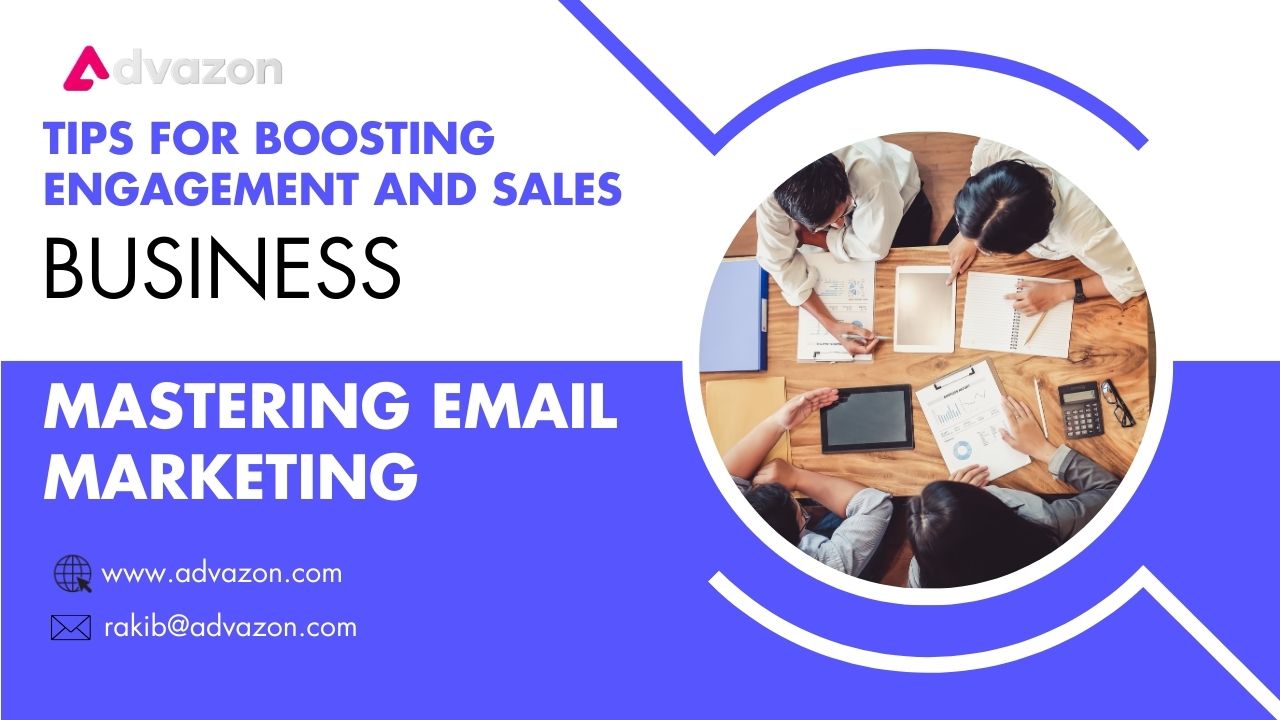Email marketing remains one of the most effective ways to reach customers, build relationships, and drive sales. However, to truly master this channel, marketers must understand the strategies and techniques that make campaigns successful. This guide provides actionable insights into creating impactful email campaigns, increasing engagement, and ultimately boosting sales.
Why Email Marketing Matters
Email marketing has a return on investment (ROI) of $36 for every $1 spent, making it one of the most cost-effective marketing channels. Unlike social media platforms, where algorithms determine visibility, email marketing gives you direct access to your audience. With the right approach, you can:
Build long-term relationships with your customers.
Share personalized and relevant content.
Drive repeat business and foster brand loyalty.
Reach your audience at scale with minimal cost.
Tips for Boosting Engagement in Email Marketing
1. Know Your Audience
Understanding your audience’s needs and preferences is the foundation of successful email marketing. Conduct surveys, analyze past campaigns, and segment your audience based on factors like demographics, purchase behavior, and engagement levels.
2. Craft Compelling Subject Lines
Your subject line is the first thing recipients see. To capture their attention:
- Keep it short and intriguing (under 50 characters).
- Use actionable language (e.g., “Discover,” “Unlock,” or “Don’t Miss Out”).
- Personalize with the recipient’s name or interests.
- Avoid spammy words like “Free” or excessive punctuation (!).
3. Design Mobile-Friendly Emails
Over 60% of emails are opened on mobile devices. Ensure your emails are responsive by:
- Using a single-column layout.
- Keeping font sizes legible (minimum 14px for body text).
Including clear and tappable call-to-action (CTA) buttons.
Testing emails on multiple devices before sending.
4. Provide Value Through Content
Deliver content that resonates with your audience. Examples include:
- Educational content (e.g., how-to guides, industry tips).
- Exclusive offers or discounts.
- Updates on new products or services.
- Stories and testimonials that build trust.
5. Segment Your Email List
Segmentation allows you to send tailored messages to specific groups within your audience. Common ways to segment include:
- Geographic location.
- Purchase history.
- Engagement level (e.g., frequent openers vs. dormant subscribers).
- Lifecycle stage (e.g., new subscribers vs. long-term customers).
6. Use Automation to Your Advantage
Automation saves time and ensures timely communication. Set up workflows such as:
- Welcome emails for new subscribers.
- Abandoned cart reminders for e-commerce businesses.
- Birthday or anniversary greetings with special offers.
- Re-engagement campaigns for inactive subscribers.
7. Incorporate Personalization
Personalization goes beyond adding a name to an email. Use dynamic content to:
- Recommend products based on past purchases.
- Highlight content relevant to the subscriber’s interests.
- Show local events or promotions based on the recipient’s location.
8. Optimize Send Times
The timing of your emails can significantly impact open and click-through rates. Analyze your audience’s behavior to determine the best days and times to send emails. For many industries, mid-week mornings work well.
9. A/B Test Your Campaigns
Testing helps you identify what resonates with your audience. Experiment with:
- Subject lines.
- Email copy and tone.
- Design elements like images and CTAs.
- Sending times and frequency.
Tips for Boosting Sales Through Email Marketing
1. Leverage Scarcity and Urgency
Encourage quick action by emphasizing limited-time offers or low-stock alerts. For example:
“Only 2 days left to claim your 20% discount!”
“Hurry, only 5 items remaining!”
2. Upsell and Cross-Sell
Use emails to suggest complementary or upgraded products. For example:
- “You purchased [Product A]. Pair it with [Product B] for the best results!”
- “Upgrade to our premium plan and enjoy exclusive benefits.”
3. Create a Sense of Exclusivity
Make your subscribers feel special with exclusive deals, early access to sales, or VIP content. Phrases like “Just for You” or “Members-Only Offer” can drive engagement.
4. Include Strong Calls-to-Action
Your CTA should be clear, concise, and actionable. Use phrases like:
- “Shop Now.”
- “Get Your Discount.”
- “Claim Your Free Trial.”
- Place CTAs prominently in your email, ideally above the fold.
5. Retarget Inactive Customers
Identify customers who haven’t made a purchase recently and re-engage them with personalized offers or reminders. For example:
- “We miss you! Here’s 10% off your next order.”
- “Still interested? Complete your purchase today.”
Measuring Success in Email Marketing
To gauge the effectiveness of your campaigns, monitor these key metrics:
Open Rate: Measures how many recipients opened your email. Aim for a rate above 20%.
Click-Through Rate (CTR): Tracks how many clicked-on links are in your email. A good CTR is 2-5%.
Conversion Rate: Indicates how many recipients completed the desired action (e.g., purchase, sign-up).
Bounce Rate: This shows the percentage of emails that couldn’t be delivered. Keep this below 2%.
Unsubscribe Rate: Monitors how many recipients opted out. Aim for less than 0.5%.
Use analytics tools and A/B testing insights to optimize your campaigns continuously.
Dedication
Mastering email marketing involves understanding your audience, delivering value, and optimizing your approach. By focusing on engagement and sales-driven strategies, you can unlock the full potential of email marketing and achieve impressive results. Whether you’re a seasoned marketer or a beginner, these tips will set you on the path to success. Learn More


